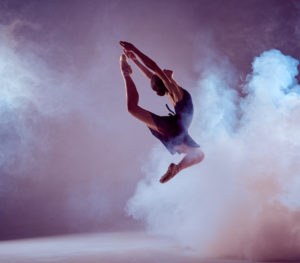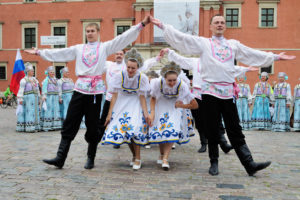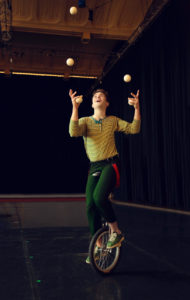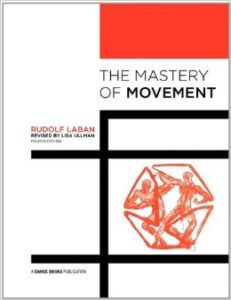 In late April we celebrate National Dance Week. This year’s festivities come with scientific evidence that dancing is good for you! A research team based at Colorado State University found that contra dancing may help to fend off aging in the brain.
In late April we celebrate National Dance Week. This year’s festivities come with scientific evidence that dancing is good for you! A research team based at Colorado State University found that contra dancing may help to fend off aging in the brain.
A four-year clinical trial followed a group of 174 healthy adults aged 60 – 79. The group was divided into four parts. One group did aerobic walking, another not only walked but also took a nutritional supplement, the third group participated in stretching and balance classes, and the fourth group attended contra dance classes involving a sequence of figures as dancers progress up and down a line. Each group met three times a week for six months.
The study focused on the fornix, which connects the hippocampus with other areas of the brain and is believed to play an important role in memory. Each participant’s fornix was measured at the start of study and six months later. The integrity of the fornix increased in the dance group in contrast to declines noted in half of the other participants.
This finding led researchers to conclude that “there is more benefit in activities like dance, that simultaneously provide cognitive and social stimulation in addition to physical activity,” according to an article in The Denver Post.
This study of the benefits of contra dancing is just the tip of the iceberg. Find out more in the next blog.

 “You must not think of dance as steps,” Rudolf Laban once told a group of student actors. “Dance is meaningful movement. You can dance with your eyebrows. When I have taught you, you will be able to dance with any part of your body.’’
“You must not think of dance as steps,” Rudolf Laban once told a group of student actors. “Dance is meaningful movement. You can dance with your eyebrows. When I have taught you, you will be able to dance with any part of your body.’’ Laban’s autobiography, A Life for Dance, is a curious book, but one that reveals a great deal about his creative vision and theatrical activities. As he notes in the letter to his publisher that opens the book:
Laban’s autobiography, A Life for Dance, is a curious book, but one that reveals a great deal about his creative vision and theatrical activities. As he notes in the letter to his publisher that opens the book:
 Mastery of Movement is for body and effort what Choreutics is for space and shape – the most comprehensive treatment of Laban’s ideas in English. The book has an interesting history.
Mastery of Movement is for body and effort what Choreutics is for space and shape – the most comprehensive treatment of Laban’s ideas in English. The book has an interesting history. Laban wrote Mastery of Movement on the Stage (1st edition) “as an incentive to personal mobility.” And indeed, the first two chapters provide a number of explorations organized around movement themes focused on body and/or effort. Laban hopes to encourage a kind of “mobile reading,” as he explains in the Preface.
Laban wrote Mastery of Movement on the Stage (1st edition) “as an incentive to personal mobility.” And indeed, the first two chapters provide a number of explorations organized around movement themes focused on body and/or effort. Laban hopes to encourage a kind of “mobile reading,” as he explains in the Preface. Long before diversity became a political issue, Warren Lamb was encouraging diversity in management teams. His model of diversity was not based on age, race, creed, or gender. Rather it was based on decision-making style.
Long before diversity became a political issue, Warren Lamb was encouraging diversity in management teams. His model of diversity was not based on age, race, creed, or gender. Rather it was based on decision-making style. In his observation and analysis of thousands of business executives,
In his observation and analysis of thousands of business executives,  Shortly after I completed my Laban Movement Analysis training (1976), Warren Lamb gave a short course at the Dance Notation Bureau. I had been thinking a lot about the relationship between movement and psychology, but in vague and hypothetical ways. What Lamb presented was much more concrete — it blew me away.
Shortly after I completed my Laban Movement Analysis training (1976), Warren Lamb gave a short course at the Dance Notation Bureau. I had been thinking a lot about the relationship between movement and psychology, but in vague and hypothetical ways. What Lamb presented was much more concrete — it blew me away. In 2011, I participated in a pilot study examining the validity of Movement Pattern Analysis profiles in predicting decision-making patterns. Although MPA has been used by senior business teams for over 50 years, its potential application to the study of military and political leaders has barely been tapped. The pilot study was the first test of this new area of application.
In 2011, I participated in a pilot study examining the validity of Movement Pattern Analysis profiles in predicting decision-making patterns. Although MPA has been used by senior business teams for over 50 years, its potential application to the study of military and political leaders has barely been tapped. The pilot study was the first test of this new area of application.